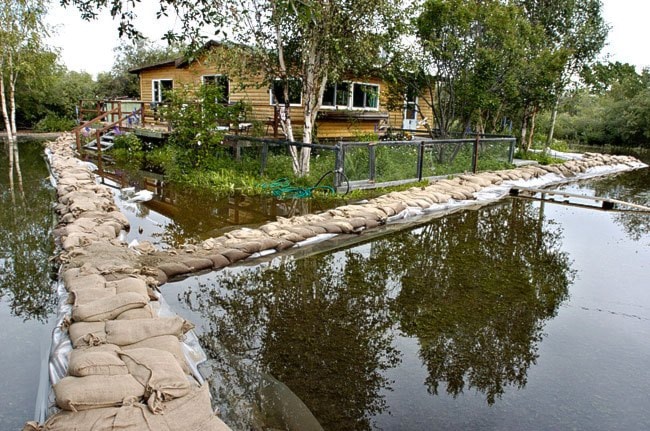Residents with homes near Marsh Lake, Tagish Lake and Bennett Lake should think about securing sandbags and planning to build a dyke around their property, says Michael Templeton, director of emergency measures.
The Southern Lakes region may flood later this summer.
Yukon’s Emergency Measures Organization is prepared, said Templeton. But homeowners need to do their part.
“Know the risk in the area that you’re living, have that plan. If flooding is a risk, what is your family’s plan, what is your plan for your property to minimize that risk to yourself? And then, if you think there’s a risk, then activate that actual plan,” said Templeton.
The current forecast shows the water level reaching what officials call “flood stage,” or the level the Southern Lakes reached in 2004.
If the water does get that high, there may be some minor flooding but no major damage.
However, the lakes may peak above or below that level depending on the weather conditions for the rest of the summer.
The lakes typically reach their highest point in the middle of August.
The water levels in the Southern Lakes are effected primarily by glacier and snow melt caused by warm temperatures, and by precipitation.
This year’s snow pack in the region was 36 per cent above normal, and early forecasts called for a low to moderate risk of flooding.
That changed a couple of weeks ago, however, when hot temperatures spurred glacial melt and caused water levels to rise by about 10 centimetres per day for several days.
Officials at Yukon Energy want Southern Lakes residents to know that there is nothing they can do to control the water levels or cause the water to drain more quickly.
As of the middle of May, when water levels are at their lowest, Yukon Energy is required to leave all gates open at the Marsh Lake control structure until the water begins to recede at the end of the summer.
Highways and Public Works has already identified sand and water pumps that could be secured in the event of an emergency.
They are prepared for the worst case scenario, said Mickey Parkin.
The highest flood on record in the area occurred in 2007. That flood peaked at one metre above the flood stage, and half a metre over the previous record flood.
At least 54 properties were damaged, mostly in the Marsh Lake area.
Average water levels in the Southern Lakes have been rising steadily over the past few decades as the glaciers have been shrinking, said Ric Janowicz with Environment Yukon.
“Climate change has been occurring – it is a reality in the Yukon. Summer temperatures and precipitation have increased over the last three decades.”
Should flooding events in the region become more frequent and more severe, and long-term planning become necessary, that responsibility would fall to another branch of the government, said Templeton.
Contact Jacqueline Ronson at jronson@yukon-news.com
